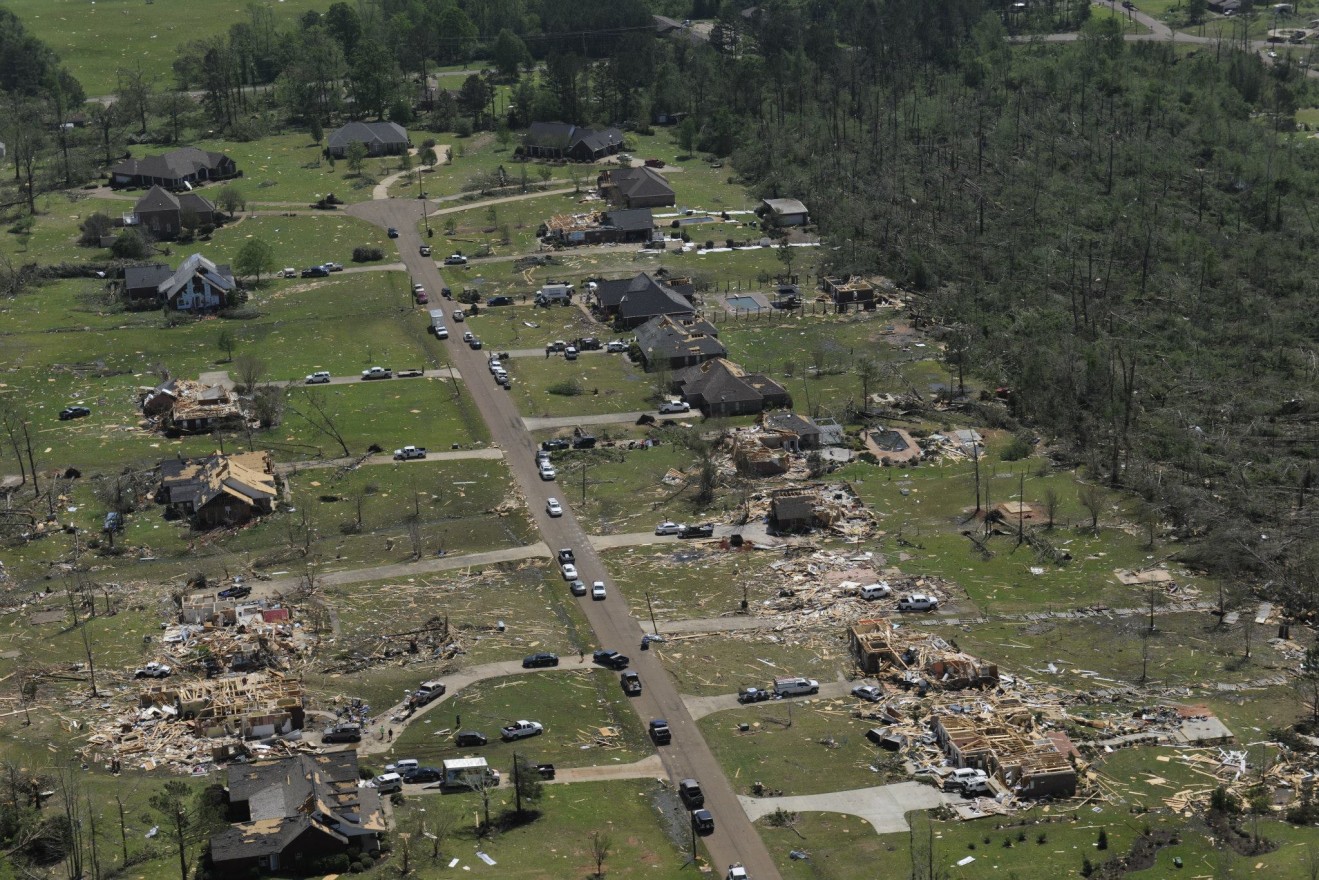
Tornado damage in Louisville, Miss., in April 2014. (Maj. Andy Thaggard/National Guard)

Tornado damage in Louisville, Miss., in April 2014. (Maj. Andy Thaggard/National Guard)
Vague tornado watches and warnings could soon become a thing of the past, thanks to research at the National Center for Physical Acoustics.
Humans can only hear a finite range of the sound spectrum. Sounds that are above the frequency of human hearing are referred to as “ultrasound.” Whereas sounds that are below human hearing are called “infrasound.”
The NCPA, located on the University of Mississippi’s campus in Oxford, has developed a method to detect tornados using infrasound, sounds below the frequency of human hearing.
There has never been a perfect method for detecting tornadoes. In fact, only one method works on a consistent basis.
“The easiest way to detect a tornado, in this day in age, is through people’s eyes and calling in their locations,” said Dr. Roger Waxler, senior scientist and group leader for the infrasound research.
Waxler holds a PhD in physics from Columbia University, and has a professional background at numerous renowned institutions in the field.
The Infrasound Group at the NCPA are getting a better grasp on when tornados form, where they land, and where they move to, to provide more accurate information for the public before a tornado hits and to provide more images of these, he said. In addition to affecting the area of the midwest traditionally known as “Tornado Alley,” the southern United States, including Mississippi, also is often hit hard by tornadoes.
According to NOAA and the National Weather Service’s Storm Prediction Center, Mississippi averages 45.1 tornado touchdowns a year. This number comes from certain features that the tornado produces, and forecasters are trained to look for these distinguished features.
The state ranks in the top 10 nationally for number of tornado touchdowns each year, with a variety of serious and non-serious effects. They usually hit the worst between the months of January and May, and can occur all the way through November.
NCPA scientists have been researching the use of sensor arrays, which they developed on campus, to pick up sound and pinpoint the tornadoes and track them through infrasound. With their new technology, they have also been able to pick up information, through Doppler radars, identifying wind speed and rotation of the tornado, within thunderstorms.
“We get to go trounce around in national forests, putting out sensors, and we have a lot of fun,” Dr. Craig Hickey, interim director of the NCPA, said with a laugh. The sensors he is referring to are placed in an array. By measuring the time at which a signal arrives at each array placement, scientists can determine the direction of the signal.
Dr. Hickey, Dr. Waxler, and the rest of the researchers at the NCPA are optimistic about the direction of the tornado research.
“There’s still a lot of questions [to be answered], and progress to be made, but the information we do have is certainly promising,” said Waxler.
Interviews:
Dr. Craig J. Hickey (Geophysics)
Interim Director of the National Center for Physical Acoustics
Senior Research Scientist II
Research Associate Professor of Geological Engineering and Physics
662-915-5963
Dr. Roger Waxler
Senior Research Scientist II
Research Associate Professor of Physics & Astronomy
662-915-5963